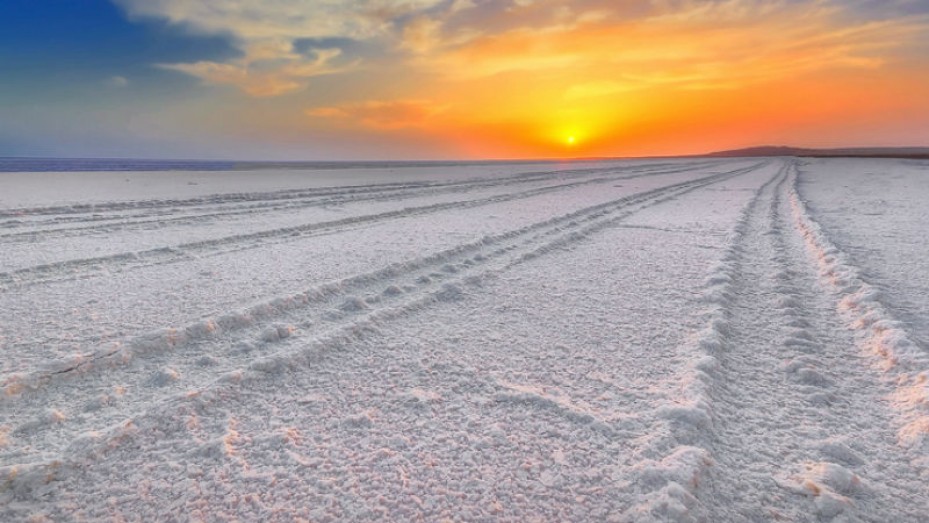 Kutch (also spelled as Kachchh) is a district of Gujarat state in western India. Covering an area of 45,674 km˛,it
is the largest district of India. The population of Kutch is about 2,092,000.It has 10 Talukas, 939 villages and
6 Municipalities.
Kutch (also spelled as Kachchh) is a district of Gujarat state in western India. Covering an area of 45,674 km˛,it
is the largest district of India. The population of Kutch is about 2,092,000.It has 10 Talukas, 939 villages and
6 Municipalities.Kutch literally means something which intermittently becomes wet and dry; a large part of this district is known as Rann of Kutch which is shallow wetland which submerges in water during the rainy season and becomes dry during other seasons. The same word is also used in Sanskrit origin for a tortoise. The Rann is famous for its marshy salt flats which become snow white after the shallow water dries up each season before the monsoon rains.
The district is also famous for ecologically important Banni grasslands with their seasonal marshy wetlands which form the outer belt of the Rann of Kutch.
Kutch District is surrounded by the Gulf of Kutch and the Arabian Sea in south and west, while northern and eastern parts are surrounded by the Great and Little Rann (seasonal wetlands) of Kutch. When there were not many dams built on its rivers, the Rann of Kutch remained wetlands for a large part of the year. Even today, the region remains wet for a significant part of year. The district had a population of 2,092,379 as of 2011 census, of which 30% were urban.Motor vehicles registered in Kutch district have their registration Number starting with GJ-12. The district is well connected by road, rail and air. There are four airports in the district: Naliya, Kandla, Mundra, and Bhuj. Bhuj is well connected with Mumbai airport. Being a border district, Kutch has both an army and an airforce base.
History
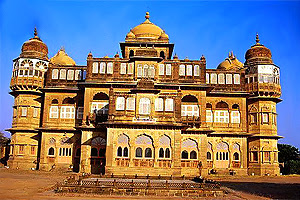
The history of Kutch can be traced back to prehistorical times. There are several sites related to Indus valley
civilization in region and is mentioned in Hindu mythology. In historical times, Kutch is mentioned in Greek writings
during Alexander. It was ruled by Menander I of Greco-Bactrian Kingdom which was overthrown by Indo-Scythians followed by
Maurya Empire and Sakas. in the first century, it was under Western Satraps followed by Gupta Empire. By fifth century,
Maitraka of Valabhi took over from which its close association with ruling clans of Gujarat started. Chavdas ruled the
eastern and central parts by seventh century but were came under Chaulukyas by tenth century. After fall of Chaulukya,
Vaghelas ruled the state. Following conquest of Sindh by Muslim rulers, Rajput Samma started moving southwards to Kutch
and ruled western regions initially. By tenth century, they controlled significant area of Kutch and by thirteenth
century they controlled whole of Kutch and adopted a new dynastic identity, Jadeja.
Kutch District, at 45,691.895 square kilometres (17,641.739 sq mi), is the largest district in India. The administrative
headquarters is in Bhuj which is geographically in the center of district. Other main towns are Gandhidham, Rapar,
Nakhatrana, Anjar, Mandvi, Madhapar, Mundra and Bhachau. Kutch has 969 villages. Kala Dungar (Black Hill) is the highest
point in Kutch at 458 metres (1,503 ft).
Higher education in Kutch is regulated by Kachchh University since 2003.About 43 colleges in total are affiliated to
the university, offering courses in Humanities, Science, Commerce, Medicine, Nursing, Education and Computing Science.
Professional courses in Engineering, Pharmacy and Management are regulated through the Gujarat Technological University.
The language spoken predominantly in the Kutch district is Kutchi language, Sindhi and Gujarati. The script of the Kutchi
language has become extinct. It is now mainly written in the Gujarati script. Samples of Kutch script are available in
the Kutch Museum. The increased use of Gujarati language is mainly because of its being a medium of instruction in schools.
Kutch district is inhabited by various groups and communities. One can find various nomadic, semi nomadic and artisan
groups living in Kutch. Gujarati Ahirs comprise a comparatively large group in Kutch.
The majority of the population is Hindu and Jain and thus largely vegetarian. Jains also refrain from eating kandmool
food grown below the ground such as potatoes, garlic, onion, and yam. There are also a sizeable population of Muslims,
who eat vegetables, chicken, mutton and occasionally camels.
Narayan Sarovar is one of the most significant Hindu religious sites in Kutch. This sarovar is a combination of 5 holy
lakes of Hinduism namely Man Sarovar, Pampa Sarovar, Bindu Sarovar, Narayan Sarovar and Pushkar Sarovar.
The Indian Wild Ass Sanctuary also known as Wild Ass Wildlife Sanctuary is the largest wildlife sanctuary of India. This
sanctuary is spread over an area of 4954 sq km and was established in 1972. This sanctuary is also one of the places
where the endangered species of Indian wild ass like Khur as well as Asiatic wild ass species like Onager are found.
The Kutch Desert Wildlife Sanctuary is the largest sanctuary of Gujarat and occupies a total area of 7505.22 sq km. This
sanctuary comprises a large forest area along with revenue wasteland and territorial water of the Arabian Sea. It is
situated in the north-eastern part of Kutch District, bordering Pakistan and the Indian Wild Ass Sanctuary.
The Prag Mahal is another prominent sightseeing destination of Kutch and is located next to the Aina Mahal. This fort was
built in the 19th century and was commissioned by Rao Pragmalji II. Its Italian-Gothic architecture style was presented by
Colonel Henry Saint Wilkins. The wages of the artisans of this palace were paid in gold coins.
The Kutch Museum is the oldest museum in Gujarat and was founded in 1877 by Maharao Khengarji. This museum houses the
largest existing collection of Kshatrapa inscriptions, which belong to the 1st century AD.
The Mundra Port of Kutch along with the Special Economic Zone (MPSEZ) manages the largest privately owned port in the
country. The project of this port was initiated by the Adani Group in 1988 as a logistics base for their international
trade operations.
Aina Mahal is a palace of mirrors built in the 18th century and is also known as the Madansinhji Museum. It was created
by Ramsinh and Gaidhar Devshi during the period of Maharao Lakhpatti between 1752 and 1761. The museum has two parts, one
of which is called the Kala Atari Picture Gallery and the other part is called the Aina Mahal.
For three centuries, Kutch was divided and ruled by three different branches of Jadeja brothers. In sixteenth century,
Kutch was unified under one rule by Rao Khengarji I of these branches and his direct decedents ruled for two centuries
and had good relationship with Gujarat Sultanate and Mughals. One of his descendants, Rayadhan II left three sons of
whom two died and third son, Pragmal Ji took over the state and founded the current lineage of rulers at the start of
the seventeenth century. The decedents of other brothers founded states in Kathiawar. 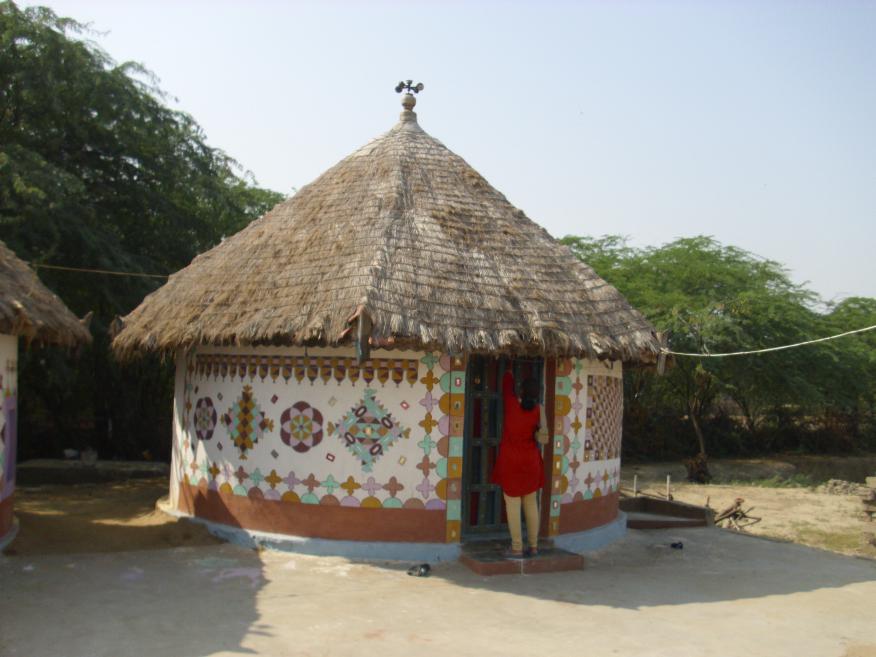 After turbulent periods and battles with armies of Sindh, the state was stabilized in the middle of eighteenth century by council known as Bar Bhayat ni
Jamat who placed Rao as a titular head and ruled independently. The state accepted suzerainty of British East India
Company in 1819 when Kutch was defeated in battle. The state was devastated by an earthquake in 1819. The state
stabilized and flourished in business under subsequent rulers.
After turbulent periods and battles with armies of Sindh, the state was stabilized in the middle of eighteenth century by council known as Bar Bhayat ni
Jamat who placed Rao as a titular head and ruled independently. The state accepted suzerainty of British East India
Company in 1819 when Kutch was defeated in battle. The state was devastated by an earthquake in 1819. The state
stabilized and flourished in business under subsequent rulers.
Upon the independence of India in 1947, Kutch acceded unto the dominion of India and was constituted an independent
commissionaire. It was created a state within the union of India in 1950. The state witnessed an earthquake in 1956.
On 1 November 1956, Kutch State was merged with Bombay state, which in 1960 was divided into the new linguistic states
of Gujarat and Maharashtra, with Kutch becoming part of Gujarat state as Kutch district. The district was affected by
tropical cyclone in 1998 and the earthquake in 2001. The state saw rapid industrialization and growth in tourism in
subsequent years.
Geography
Kutch is virtually an island, as it is surrounded by the Arabian Sea in the west; the Gulf of Kutch in south and
southeast and Rann of Kutch in north and northeast. The border with Pakistan lies along the northern edge of the Rann
of Kutch, of the Sir Creek. The Kutch peninsula is an example of active fold and thrust tectonism. In Central Kutch there
are four major east-west hill ranges characterized by fault propagation folds with steeply dipping northern limbs and
gently dipping southern limbs. From the gradual increasing dimension of the linear chain of hillocks towards the west
along the Kutch mainland fault and the epicentre of the earthquake of 2001 lying at the eastern extreme of Kutch mainland
fault, it is suggested that the eastern part of the Kutch mainland fault is progressively emerging upward. It can be
suggested from the absence of distinct surface rupture both during the 1956 Anjar earthquake and 2001 Bhuj earthquake,
that movements have taken place along a blind thrust. Villages situated on the blind thrust in the eastern part of the
Kutch mainland hill range (viz. Jawaharnagar, Khirsara, Devisar, Amarsar and Bandhdi) were completely erased during the
2001 earthquake.
Education
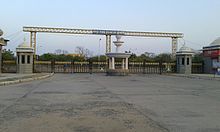
Culture
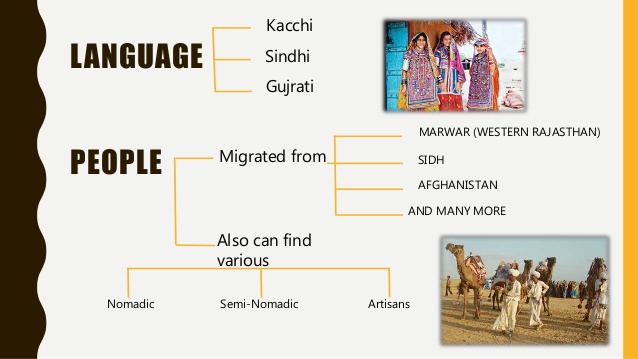
Language
People
Food and Drink
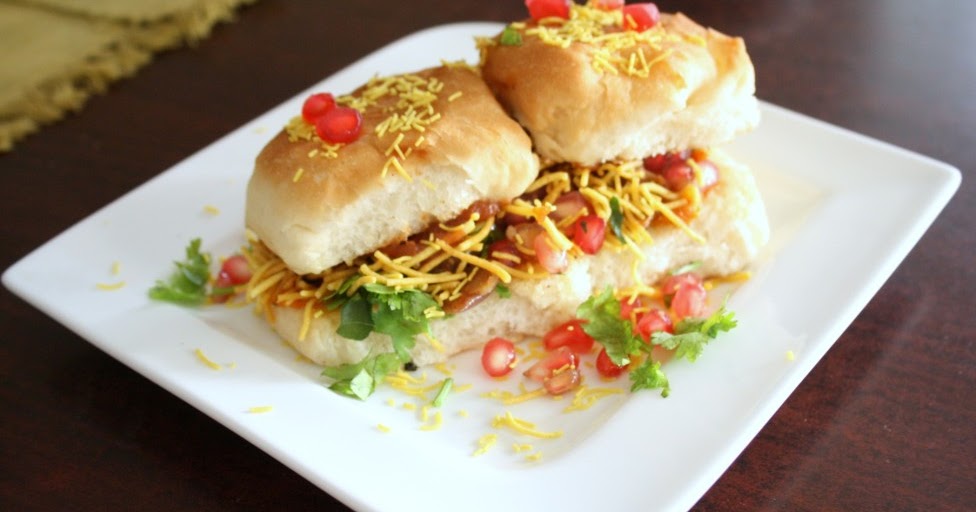
In the villages, staple foods include kadi-khichdi, bajra and milk ; bajara na rotla with curd and buttermilk is very
common food for all the Gujarati people. Bajra was introduced by a king of this region named Lakho Fulani. During his
period of exile, he came to know about this grain in some tribal regions. They also extensively drink buttermilk during
lunch. Milk is considered to be sacred food and offering it to somebody is considered a gesture of friendship and
welcoming. Settlement of dispute invariably follows offering milk to each other as a concluding remark. In the Kutchi
engagement ceremony, the bride's family offers milk to the groom's relatives as a symbol of accepting their relationship.
Tea is the most popular drink in this region and is enjoyed widely.
Tourists Places in Kutch
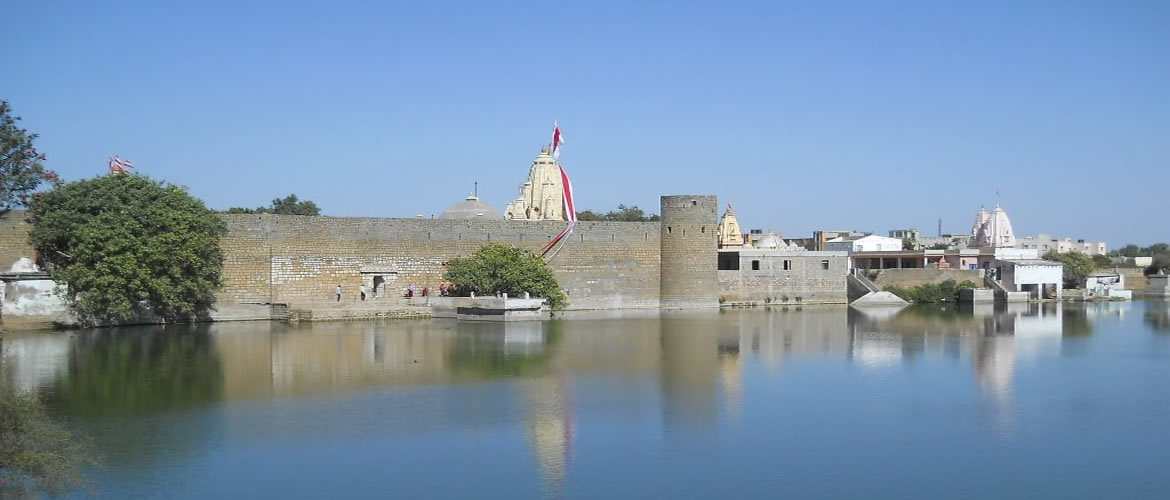
Narayan Sarovar
This lake is associated with an incident of drought that appeared in ancient times. To finish this drought, Lord Vishnu
appeared in the site of this lake in the avatar of Narayan to answer the prayers of devotees and bless them with the
water in this lake.
The main attraction of this lake is the temples in its region. The group of temples around the Narayan Sarovar are
referred to as Narayan Sarovar Temple. The main temples in this site are dedicated to Shri Trikamraiji, Laxminarayan,
Govardhannathji, Dwarkanath, Adinarayan, Ranchodraiji and Lakshmiji. An annual fair held in the place during November
and December is also a big tourist attraction.

Indian Wild Ass Sanctuary
Other species of animals found in this sanctuary include 93 species of invertebrates, 25 species of zooplanktons, 1
species of annelid, 4 crustaceans, 24 species of insects, 12 species of molluscs, 27 species of spiders, 4 species of
amphibians, 29 species of reptiles, 2 species of turtles, 14 lizards, 9 species of mammals and 70,000-75,000 bird nests.
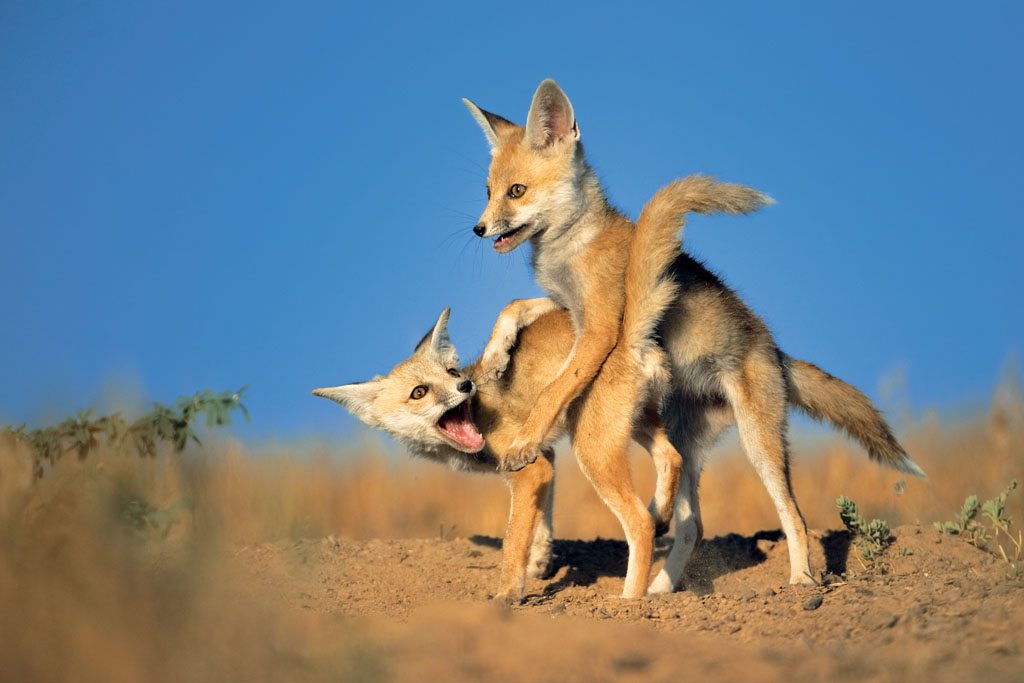
Little Rann Of Kutch Sanctuary
It also has a vast area comprising large number of sun-baked mud flats, which are salt impregnated. Few other parts of
this sanctuary have small patches of uplands and hilly islands called as ‘bets’.
This sanctuary comprises species of some rare wild animals like striped hyena, porcupine, fox, small Indian civet, Indian
pangolin and star tortoise along with reptiles like venomous and non-venomous snakes and monitor lizards as well as some
rare species of birds.
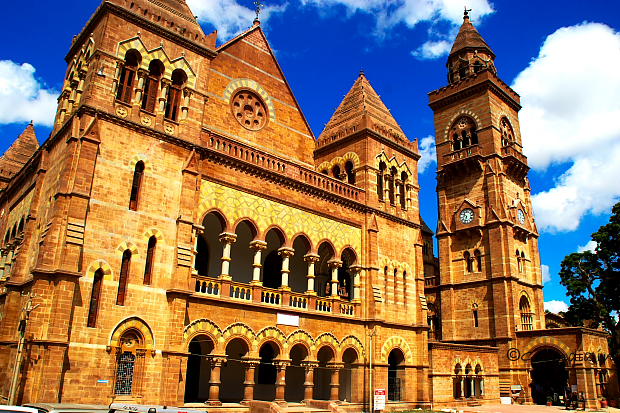
The Prag Mahal
The main features of this palace includes its main hall, which is filled with decaying taxidermy followed by its Durbar
Hall, which comprises ancient and broken chandeliers along with classical statues.
Its Corinthian pillars, Jali work and a small Hindu temple in its courtyard are also quite popular. However, the 2001
Gujarat earthquake damaged this fort heavily and now, only the main hall and bell towers remain in good condition.
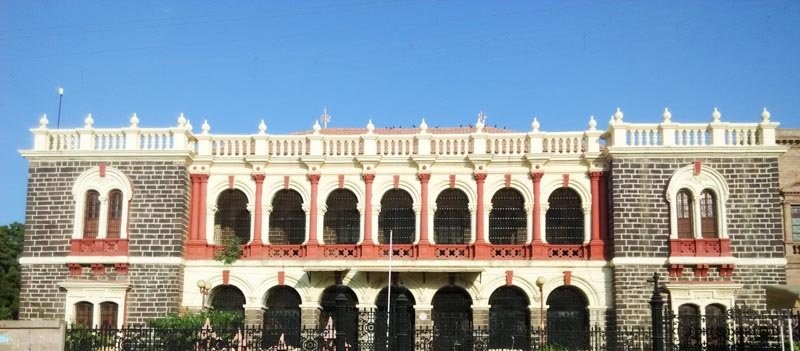
The Kutch Museum
Its collection also includes examples of the extinct Kutchi Script along with a collection of some ancient coins. One
section of this museum is also dedicated to tribal culture and includes examples of ancient artefacts, folk arts and
crafts along with information about the tribal people. There is also a display of some embroidery work, paintings, arms,
musical instruments, sculptures and metalwork in this museum.

Mundra Port
This port operates the world’s largest coal handling terminal in Mundra. It is spread over an area of 100 sq km out of
which 6,893 acres are government notified, which makes it the largest private SEZ government notified port of India.
This port also touched the statistics of operating 40 million tons of cargo in 2009-10.
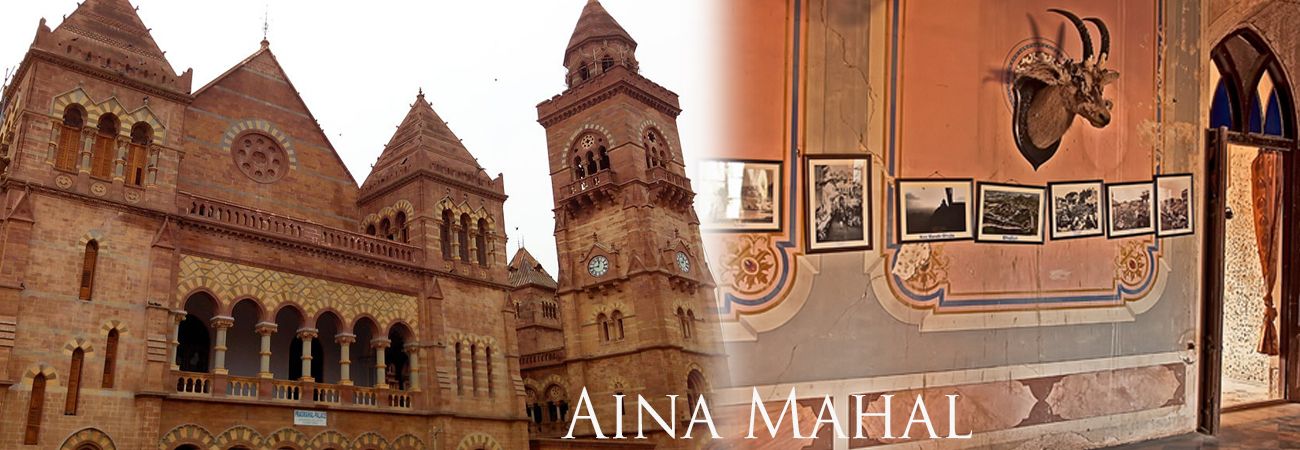
Aina Mahal Palace
This ‘Aina Mahal’ or the hall of mirrors is the biggest attraction of this museum. This hall is situated on the second
floor of the museum and contains white marbled walls covered with mirrors that are separated by gilded ornaments. The
hall has objects like a Dutch Clock, English and French globes, antique pictures, mechanical toys, etc.
The middle floor of the museum has a pleasure pool with a platform above it. It also has a series of fountains that are
operated by a system of pumps placed below a Venetian chandelier. The art gallery in this museum comprises many
photographs and portraits of Bhuj city and its rulers.
